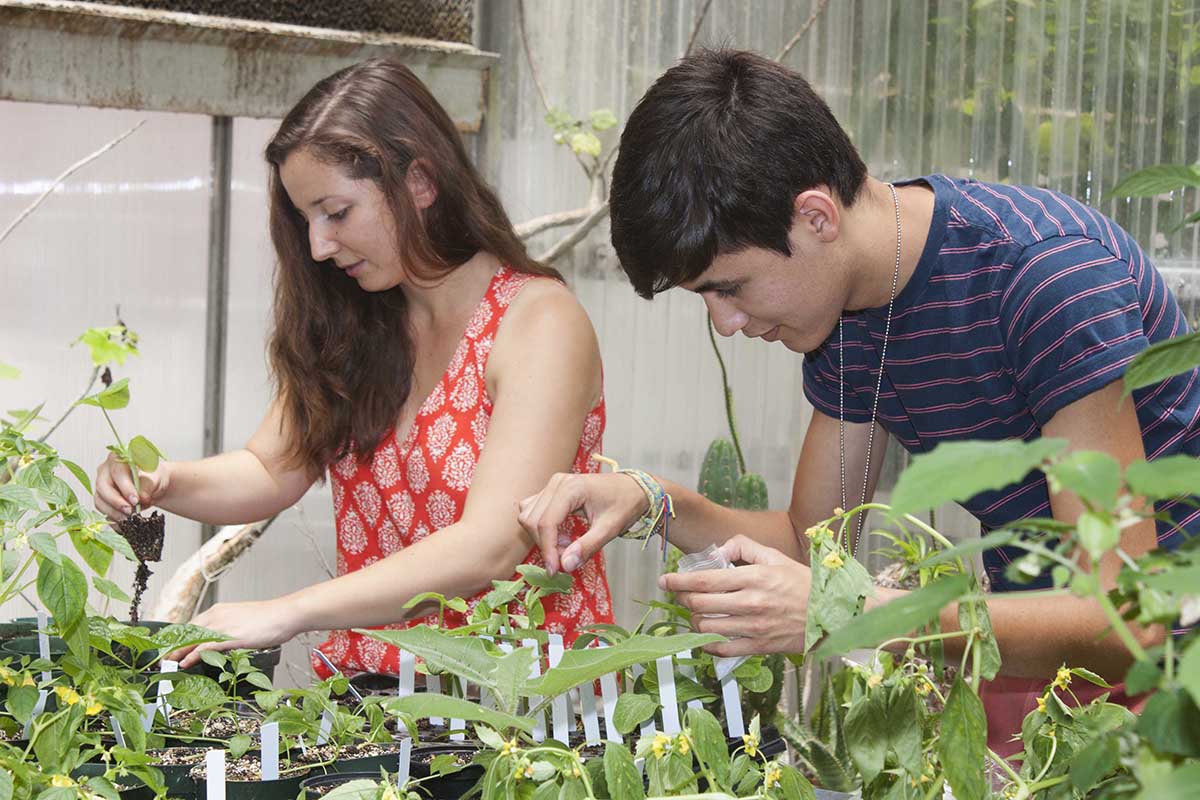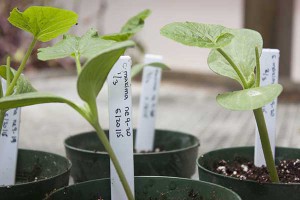Stockpiling seeds for the future
Last September, Heather Rose Kates, Genetics Institute doctoral candidate, went the only place hotter than Gainesville– the desert.
She was looking for seeds.
After using the U.S. Department of Agriculture’s seed banks for her own research, she wanted to a make a contribution.
“That made me aware of how useful they are in research,” Kates said, “and how having those available to researchers can make it a lot easier and faster, rather than researchers having to go out, and do all the collections that they need to do.”
Keeping her car to a crawl as others whizzed by, she slowed even further every time she spotted a patch of green against the brown, red and yellow scrub. It might be a patch of coyote melon or fingerleaf gourd.
Kates studies the genus Cucurbita– domesticated members include the domesticated pumpkin and squash. She received the USDA Plant Exploration Grant to collect Cucurbita digitata (fingerleaf gourd) and Cucurbita palmata (coyote melon) seeds to contribute to the seed bank.
“Seeing these incredibly drought-tolerant Cucurbita vines growing in the desert was unreal,” Kates said. “There were no other plants like them out there– even in the midst of the multi-year California drought. These leafy, green vines were covered with softball sized green and yellow fruits. It made me realize how special this group of plants is, and that Cucurbita research has the potential to develop a high-yield drought-tolerant crop.”
She studies the species as part of her research for her dissertation. Species of Cucurbita grow wild throughout North, Central, and South America. Kates traveled to Arizona, California and New Mexico.
She also studies a species native to Florida. Its common name is the Okeechobee gourd. It is a federally designated endangered species– the only crop wild relative endemic to the U.S. that is also endangered.
The focus of Kates’ dissertation is analyzing the phylogenetics of Cucurbita.
The plants she studies are not anything anyone would want to eat now. And scientists still don’t understand the divergences and changes that took place in the plant’s physiology as it was domesticated by earlier people groups.
There is some understanding of how this took place with rice, wheat and corn, but that is because the three are distantly related.
In her research, she compares the hypothetical wild ancestor to plants that represent the first stage of domestication, as well as those from modern improvements. From this, she organizes trees demonstrating the relationships.
“The genus Cucurbita, I think, is one of the most interesting cases of domestication,” Kates said. “Because you have a small group of wild species that diverged fairly recently, and there are probably five different domestication events from five different species.”
By domestication events, Kates means that five genetically distinct groups of wild plants gave rise to five cultivated lines.
“Most people don’t know how unusual that is,” Kates said.
By studying the undomesticated relatives of modern food plants, researchers gain insight into the amount of species diversity, how well the plant will handle environmental change, why certain species are so endangered, and how to plan conservation strategies.
“The goal is to preserve the pool of genetic diversity for crops,” Kates said.
Video of research by Voices of America



